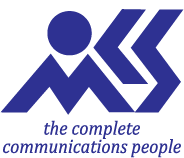This article explores the latest and trending event marketing ideas and how they can help one to build more effective and engaging events.
1. Hybrid Events:
Hybrid events are the events that combine the traditional in-person experience with virtual components. This allows for greater reach and flexibility. These events emerged prominently during the covid pandemic and has continued to gain traction as organizations try to accommodate diverse audience preferences and needs.
Benefits:
- Attracts both on-site and remote attendees that expands your event’s audience.
- Allows attendees to participate according to their comfort levels and schedules.
- Provides access to those unable to travel
Implementation Tips:
- On should ensure that virtual and in-person elements are to be well-integrated to provide a cohesive experience.
- To maintain the quality of the experience, one should invest in reliable streaming and virtual engagement tools.
- Use interactive features like live polls, Q&A sessions and virtual networking opportunities to keep all attendees engaged.
2. Personalization:
Personalization is key to create meaningful connections with attendees. It involves tailored content, interactions and experiences to fit individual preferences and needs. This leads to higher engagement and satisfaction among the attendees.
Benefits:
- Tailored experiences make attendees feel valued and understood.
- Personalized content and interactions can lead to pleasant event experience.
- Customized experiences can foster long-term relationships.
Implementation Tips:
- Always use attendee data to segment audiences and tailor content accordingly.
- Personalize the invitations and other communications to reflect individual interests and preferences.
- Utilize event apps and other platforms that allow for personal agendas, networking preferences, and content selection.
3. Interactive Technology:
Interactive technology improves attendee engagement by making events more immersive and participatory. Tools like augmented reality (AR), virtual reality (VR) and interactive displays create memorable experiences that captivate and engage audiences.
Benefits:
- AR and VR offer unique, hands-on experiences.
- Interactive displays and gamification can encourage active participation.
- Real-time interactions can keep attendees involved and interested.
Implementation Tips:
- Incorporate both AR and VR experiences to align with your event’s theme and goals.
- Use the technology-driven booths where attendees can interact with products and services.
- Add interactive elements like quizzes, challenges, and leaderboards to engage and motivate attendees.
4. Sustainability event practices
Sustainability has become a important consideration in every event planning. It reflects the broader societal concerns about environmental impact. Embrace eco-friendly practices to demonstrate corporate responsibility of the company or the brand.
Benefits:
- This shows commitment to environmental and social responsibility.
- Reduces waste and can lower costs through efficient resource use.
- Attracts eco-conscious attendees who value sustainable practices.
Implementation Tips:
- Use sustainable materials for event decor and promotional items.
- Implement waste management strategies and encourage recycling.
- Partner with vendors and venues that prioritize sustainability and green practices.
5. Experiential Marketing:
Experiential marketing focuses on creating interactive experiences to which attendees engage on a deeper level. It’s about making the event memorable and impactful through unique and hands-on activities.
Benefits:
- It builds emotional connections with attendees through memorable experiences.
- Unique experiences help strengthen brand messages and objectives.
- Interactive elements can involve attendees actively.
Implementation Tips:
- Design the activities that align with your brand and resonate with your audience.
- Use formats such as workshops, live demonstrations and interactive displays.
- Continue engagement post-event with content related to the experiential activities.
6. Influencer Partnerships
Influencer partnerships can significantly boost your event visibility and credibility. By collaborating with macro, micro and nano influencers you can reach their followers and amplify your event’s reach in bigger number.
Benefits:
- Influencers can help you connect with their audience and expand your event’s visibility.
- Influencers’ advertisements can lend credibility to your event.
- You can always reach specific demographics and niches through influencer channels.
Implementation Tips:
- Choose the right influencers whose audience aligns with your target market.
- Work closely with influencers to create engaging and authentic content.
- Measure the impact of influencer partnerships through engagement metrics and feedback.
7. On-Demand Content: Extending Event Reach
Offering on-demand content allows attendees to access event materials and sessions after the live event. It helps those who couldn’t attend in real-time and extends the event’s value.
Benefits:
- It provides content to those who missed the live event or want to revisit.
- Keeps the event’s momentum going post-event.
- Maximizes the value of your event content and investment.
Implementation Tips:
- Ensure all key sessions and presentations are recorded and made available.
- Should provide a user-friendly platform for accessing these on-demand content.
- Communicate and remind the availability of on-demand content to attendees before and after the event.
Conclusion
Staying well-informed of the latest event marketing trends is essential to create successful and impactful events. By embracing hybrid formats, personalization, interactive technology, and sustainability, marketers can engage audience with memorable experiences. As the event marketing industry continues to evolve, staying updated and adaptable will be key to drive success in future events.





